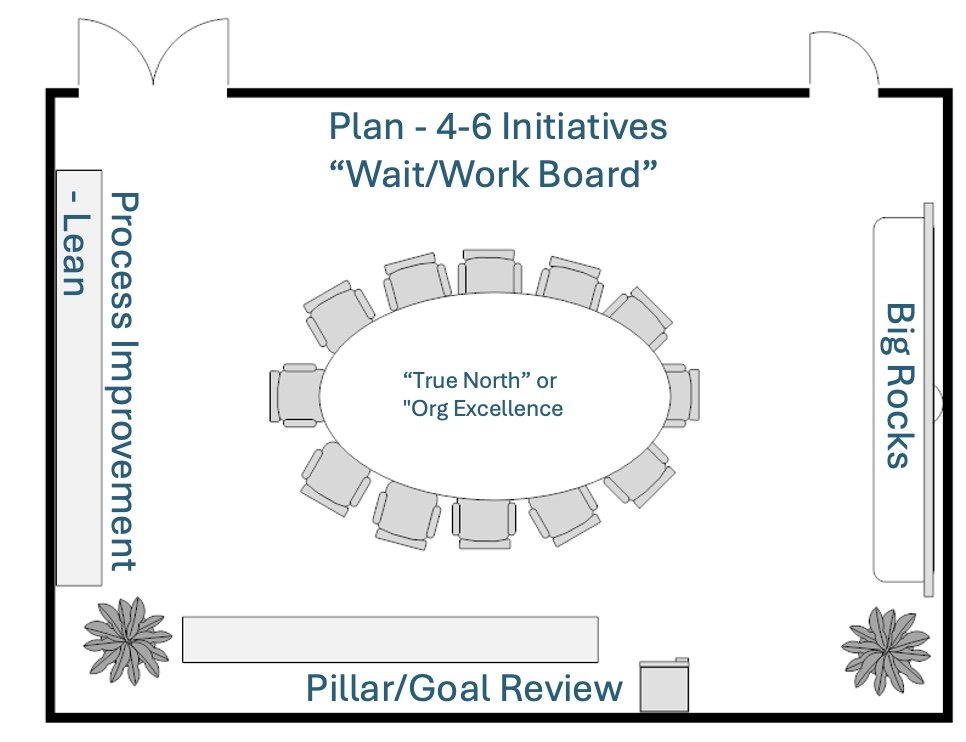Measuring Success Through Strategic Pillars
Delivering sustainable results requires more than just setting broad organizational targets. True success comes from creating a comprehensive system where every aspect of the hospital, from executive leadership to individual departments, aligns its efforts with a unified purpose. At the heart of this alignment lies a structured approach to goal setting that ensures the organization moves forward cohesively toward its mission and vision.
The strategic pillar framework offers healthcare organizations a powerful methodology to measure success across critical operational areas. By organizing goals around five foundational pillars—Quality, Workforce, Patient Satisfaction, Finance, and Community—hospitals create clear pathways for improvement while ensuring that priorities cascade effectively throughout all levels of the organization.
The Critical Role of Monthly 1:1 Meetings
Maintaining strong connections with your team members isn't just good practice—it's essential for organizational success. These vital one-on-one conversations go by many names across different organizations: compass checks, accountability meetings, performance dialogues, leadership touchpoints, alignment sessions, progress reviews, success check-ins, or simply monthly one-on-ones. Regardless of what you call them, these regular conversations serve as the backbone of effective leadership and departmental management.
Don't Change the Goalposts
We've all been there – watching a game where one team, frustrated by their inability to score, suggests moving the goalposts "just a little." In sports, this proposition would be immediately rejected as absurd. Yet in organizational settings, we often witness a more subtle version of this same phenomenon: the strategic redefinition of success metrics.
Annual Goal Cycles - A Critical Framework for Hospital Success
Healthcare institutions across the country are increasingly recognizing that the implementation of annual goal cycles is not just an administrative exercise—it's a crucial framework for driving sustainable improvement in patient care, operational efficiency, and financial performance.
The concept of annual goal cycles in hospitals has evolved significantly over the past decade. While many healthcare organizations previously operated with loose objectives or department-specific targets, today's successful hospitals are embracing comprehensive, institution-wide annual goal cycles that align with their fiscal calendars and regulatory requirements.
Managing People, Process, and Plan - A Systematic Approach to Organizational Success
In many healthcare organizations, the key to achieving success lies in effectively managing People, Process, and Plan. To truly harness this triad, it requires a disciplined, structured approach that keeps the entire team aligned with the organization’s mission, strategic goals, and improvement initiatives. One highly effective method for maintaining this alignment and keeping progress on track is what I call the "Around-the-Room Review."
This blog will explore how to set up a structured review process by utilizing the physical layout of a room to track progress and address key strategic priorities in a systematic way.
Measuring Success Through Strategic Pillars
Delivering sustainable results requires more than just setting broad organizational targets. It’s about creating a system where every aspect of the organization, from leadership to individual departments, aligns its efforts with a unified purpose. To accomplish this, I propose using a “Pillar” framework by which we measure the success of our efforts across the critical areas of People, Process, and Plan (Employee Engagement/Culture, Lean Process Improvement, and Strategy).
These strategic pillars - Quality, Workforce, Patient Satisfaction, Finance, and Community - serve as foundational guides that shape our future. Each pillar will have overarching organizational goals that cascade down to specific departmental objectives, creating a cohesive framework where every hospital department plays an active role in achieving the organization’s mission.






